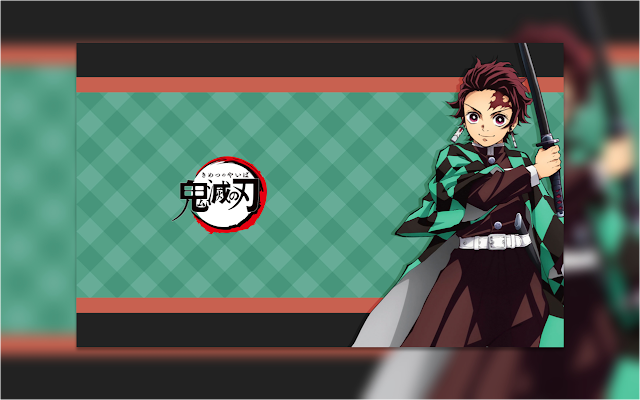Life Challenge #2 | SimplificationPart 1: Prologue and development
The bridge between positivity and simplicity
“Life is simple but we insist on making it complicated” - Confucius
Two millennia ago, the great sage, Confucius, came up with this insightful statement. Put it into today’s context, it is still as applicable as in ancient times.
This Medium article brings out the essence of the quote nicely: it is not life that is complicated but us who tend to overthink things and make ourselves suffer unnecessarily. [1]
Especially in today’s day and age when humans can do much more with technology, and are less obsessed with survival (a life and death matter, not about how others look at you), we forget that life is inherently simple. [2] Just do what we can to survive, and the rest of the time will be ours.
It is this overthinking and getting frustrated over the smallest things that prevented me from having a positive mindset. Hence, it is only natural for this Simplification Challenge to be a follow-up to the Positivity Challenge.
I learnt the need for simplicity from notebook-making
During the previous weekend (6 June), I realised that I needed to get a new notebook as the one I was currently using ran out of pages. As all stationery stores and supplies shops were still close down amidst the gradual reopening measures for Singapore’s post-Circuit-Breaker period, I decided to make my own notebook.
I gathered all the materials I needed:
- A stack of unused fax invoice papers
- Puncholder
- Scissors
- Clear tape
- File binder (basically a piece of thin metal)
- Ruler
- Plastic sheet
- Wide extendable string
- Cardboard sheets
Basically, as the papers were thick and I assumed I had no sharp cutting materials, I tore out the pages, folded them and cut the pages one by one. This was a very time-consuming process, and the pages turned out to have slightly different dimensions.
Next, I created a page with a whiteboard, which was basically a piece of paper wrapped with a plastic sheet. I wanted to include this to take down reminders and write down lists. However, it was more flimsy than I had anticipated. After that, I cut out a piece of cardboard and folded it into a notebook cover.
I decided to waterproof the notebook because I would be outdoors quite often during training, and I would hate for the notebook to get soaked by the rainwater. To do so, I taped the whole cardboard notebook cover. But before that, I used a black marker to colour the whole cover black, because it would make the notebook more usable outfield (not too eye-catching). It turned out to be more trouble than it was worth.
To bind the pages together, I used the puncholder to punch two holes at the top of every page, placed the binder through the holes and bent the ends of the binder poking out so it would not fall out.
I did not do the binding before the taping so that I could remove a page easily when I needed to access it without the rest of the notebook. This was at least less messy than tearing out pages. The removable pages feature was the only thing that turned out good in my notebook.
Originally, I wanted to make a pen holder by cutting out one small piece of the extendable string and tried to attach it to the notebook cover using tape. Normally, it would be best to use a strong adhesive such as glue that could be easily applied here, but when I asked, my mother thought it was too much of a waste, and recommended tying a string around the notebook cover to substitute as a pen holder.
The whole process took me 4 hours. My mother came to check because she wanted to see how my notebook turned out (she first got interested when I wanted to make my own when she could not find any A6-sized ones I requested for in the stores) and she was astonished to see me taking so long. Who wouldn't be?
She was perplexed how something so simple to make can make me spend hours on it. And she demonstrated a method that allowed her to churn out 4 notebooks in half an hour:
- Measure the size of the paper you want on the first page of the stack, then with a drawing board underneath it, cut through the stack with a penknife.
- Measure the size of the paper cut out on the cardboard and double the length, then cut it out and fold it over the paper.
- Place the whole strip of cardboard on the drawing board and tape both sides up.
- Using a large puncholder, create holes through the stack of paper and the cardboard covering it.
- Use a binder (metal strip, nylon thread or anything suitable) to bind the cardboard covering and paper together through the holes.
Her way of doing things was much more simplified than the many paragraphs I spent on describing my method. And her end product looked nicer than mine too. This picture makes the difference clear:
 (Left: the notebooks my mother made. Right: the notebook I made.) The difference in quality can be seen in the evenness of the pages and how closely the size of the covering and the stack of pages matched.
(Left: the notebooks my mother made. Right: the notebook I made.) The difference in quality can be seen in the evenness of the pages and how closely the size of the covering and the stack of pages matched.
The moral of the story
I made several mistakes that made the whole craftwork more complicated than it was necessary.
First, I assumed that the materials I had were the best fit for the job and compromised too much on their suitability. Making assumptions was supposed to make things more efficient [3], but that would only work if they were based on accurate information. It would be better if I had a plan on how best to use my materials and discuss with my parents about whether there would be any alternative materials that were better than what I owned.
Second, I made a fundamental mistake in product design - I tried to cram in too much functionality into one product, until I lost focus of what I wanted to do [4]. My original intent was to have a pocket-sized paper with waterproof backing for me to write down notes, but it sidetracked to adding on trivial things to make my life a bit more convenient when I was writing.
Third: I skimped on the measurements but I realised later that it was one of the most crucial process for the end product to function well [5]. As a result of this sleaziness, which was a consequence of me not making the notebook a simple one, my pages and cover turned out to be uneven. It was so had that when I tried to do the binding, a few pages tore off.
These called for some simplicity to be introduced into my life.
Taking the first step to simplicity: make a statement
Hence, I did up plans for another week-long challenge targeting different aspects of my life that can be simplified. To keep whatever tasks I needed to complete the challenge from becoming too complicated, I decided to make my own simplicity statement which will be the motto for this challenge. This is the statement:
“Think with a purpose. Don't waste time overthinking.”
As I pen down this post, I am already halfway through the challenge. Some of the to-dos are less realistic than I had thought. But these are valuable lessons for me to improve future challenges. Fight on!
Notes:
[1] The Medium article on leading a simple life:
https://medium.com/@feeljoy.in/life-is-simple-but-we-insist-on-making-it-complicated-c1e910a13431























